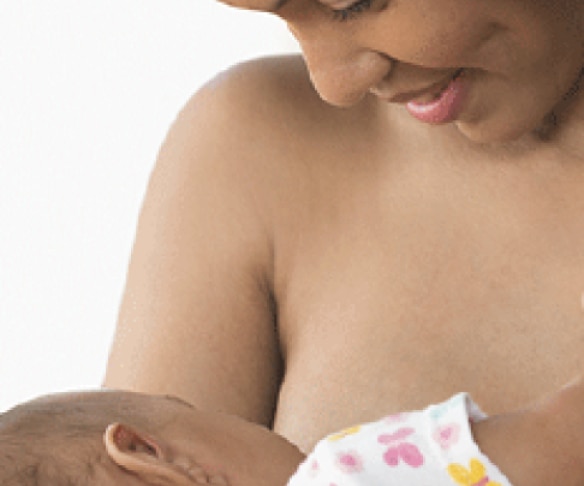Diarrhea actually looks different in breastfed and formula-fed babies. Breastfed babies naturally have a looser stool that may appear runny or seedy with a yellow or greenish color. But there's no reason to worry. Breastfed babies frequently stool after each feeding during the first month of life.
Diarrhea symptoms in breastfed babies:
- Sudden increase in frequency of stools.
- Stool contains mucus, blood or a new foul odor.
Formula-fed babies may poop several times per day or skip a day or two between bowel movements. This is normal. Their poops will likely have a yellow or green color and a paste-like consistency.
Diarrhea symptoms in formula-fed infants:
- Sudden increase in watery or very loose stools.
- Stool contains mucus, blood or a new foul odor.
Look out for other symptoms in both breastfed and formula-fed infants including decreased appetite and fussiness, along with fever.
Diarrhea could be a symptom of food allergy or a reaction to a medication, virus, bacteria, food-borne illness or it can even be related to excess juice consumption. Whatever the cause, keep feeding your baby through their diarrhea with breastmilk or their current formula, unless otherwise directed by their doctor. It's very important to talk to one, especially if your baby is less than 6 months and has vomiting or diarrhea. For children 6 months and older, consult your doctor and offer an oral electrolyte hydration solution when your child's diarrhea and vomiting starts, along with the same food or beverages your baby would normally eat.
What to do when there's blood or mucus in your baby's stool
Around 90% of the time, bloody stools are indicative of anal fissures—it sounds scary, but it's actually just small tears caused by large or hard stools. In this case, blood in the stool is usually bright red. Dark tar-colored blood is often indicative of a stomach bleed, and might be more serious. It's important to always check with your baby’s doctor if you notice blood in their stool.
It's not uncommon for there to be mucus in your newborn’s stool, especially in the first few weeks of life for a breastfed baby. If your baby has green stool with mucus, they may have a viral infection. However, mucus can also point to other health concerns, so call your baby’s doctor if you see it and your child is having other symptoms—like a fever or diarrhea.
Constipation in Babies
The flip side of all of this is constipation. As your baby grows, he will stool less frequently, and you may become concerned that they're a little backed up. Breastfed babies poop a lot in the first month of life, then may quickly move to a phase where they go a few days without dirty diapers. Babies also poop less often when they move on to solid food.
How to Relieve Constipation in Babies
It’s uncommon for babies who haven’t started solids to become constipated or have trouble pooping. Its normal for some babies to turn red or grunt while pooping. If you think your baby is constipated, has trouble passing stools, or seems to be experiencing pain while pooping, talk to your pediatrician.



